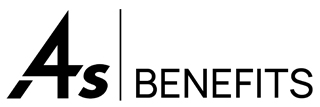Your Cheat Sheet to Professional Liability Insurance Speak
Here's a handy guide to assist you in understanding the lingo – putting you on a level playing field with your broker and the insurance company.
Recently, there has been an increase in insurance companies getting into Professional Liability coverage within the advertising and media space. And while these companies may say they are experts in providing the coverage, more often than not there are gaps in their policies. Sometimes those gaps are enormous, and unfortunately not always spelled out to you. You may think that you are getting the proper coverage, but there is a high probability you are not.
Since most policies are not created equal, this guide will help you to better understand exactly what your current policy, or proposed policy covers – or more importantly, what is doesn’t cover.
Occurrence vs. Claims-Made Policy
4A's policies have the Occurrence form which is a broader form than Claims Made. With the Claims Made policy form, the claim has to be presented during the policy term. You generally have to buy "tail" coverage when you replace a Claims Made policy in order for a late claim to be covered -- not so with Occurrence form.
Defense Costs Inside vs. Outside the Policy Limits
If Defense Costs are structured within the policy limits, you are limiting the amount of coverage available to pay a claim. For example - Policy Limits of $3 Million, with Defense Inside the limit: claim is settled for $2.5 million and Attorneys cost $750k. When you add the two costs together, you get $3,250,000. You owe $250k out of your own pocket.
If you had structured your policy with defense outside the limits and your claim was settled for $2.75 million, it wouldn't matter what the attorneys cost, because that amount is outside your policy limit (in other words, attorney cost is unlimited – and you know how expensive that can be!). Defense costs outside the limits is good "sleep at night" coverage, but may be overkill if your policy limits are $5, $10, or $15 million.
"All Risk" vs. Named Perils
The 4A's policy with AXIS PRO is an "All Risk" form (think blanket coverage), which covers all activities except those specifically excluded. A Named Perils policy works the opposite way and only covers the things on a list in the policy – everything else is excluded. When all the new forms of social media were emerging, the 4A's policies didn’t have to be amended, because they are "All Risk". Other Named Perils policies had to add the new media to their list for coverage to be there. Which would you rather have, a blanket or a napkin?
Retention vs. Deductible
Retention is your piece of the claim. This is usually driven by the strength of your balance sheet. Remember, the higher the retention, the lower the policy premium. Also, retention is different from deductible in that it doesn't take a bite out of the policy limit. If you have a $3 Million policy limit and a $25,000 retention, you still have $3 Million to pay your claim (and those attorneys if your defense costs are within the limits).
Third Party vs. First Party Insurance
Third party means the insurance protects your client from financial damages (due to your services), while First Party means the insurance reimburses your agency’s expenses. The Professional Liability, E&O, Cyber Tech, Security & Privacy and Regulatory Defense coverages are all for client financial damages. The Crisis Management and Computer Extortion endorsements cover your expenses associated with outlay for PR during a data breach, or notification costs for your client’s customers where the law requires.
What drives the premium?
- Billings
- Client industry (are they Liquor, Tobacco, or Gambling? Known in the agency insurance world as "the Sins")
- Policy Limits
- Retention (your cut of the claim)
- Defense Inside or Outside the limits (see above)
Since there are many moving parts, a discussion with your broker or with us can help you sort all these out.
Are all policies the same?
Definitely not. There are many companies out there that offer the coverage, but they must endorse it to make it fit the Ad Agency model. The 4A's policy was written for members specifically to cover their needs/exposures – a custom fit. Ask your broker whether the alternative coverage you are being offered is from one of the top tier carriers in media/professional liability. Remember, a big brand name does not always equal experience in medial/professional liability. Many insurance companies have small media departments, so be sure to buy from a company that specializes in these lines. And most importantly, ask about the insurance carrier's record in paying claims – the point in time when you REALLY need them. AXIS PRO has a long and stellar reputation in litigation and claims payment. Ask anyone you know with a 4A's policy and they'll tell you.
